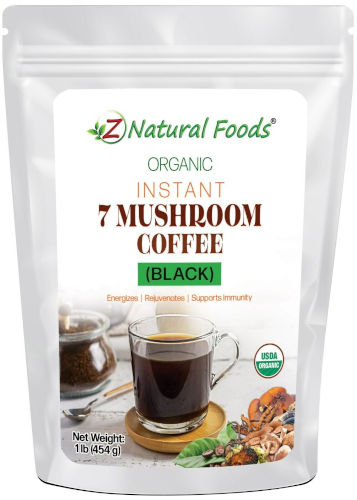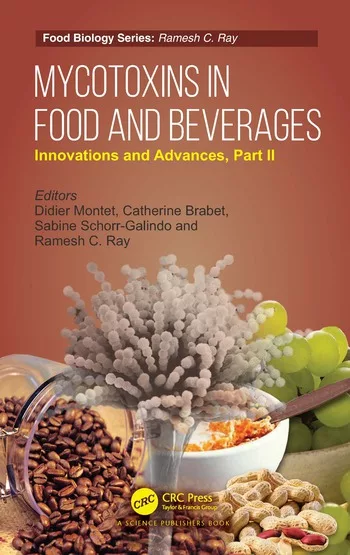Organic, functional demands driving future for coffee ingredients
At-home consumption, alternative additives open doors for coffee

Image courtesy of Getty Images
In the 2021 reboot of the animated series “Rugrats,” single mom Betty DeVille owns and runs the coffeehouse Betty’s Beans, which serves as a go-to spot for characters. The show even includes a scene where “Jen. Z” orders a coffee drink, takes a selfie with it and then leaves without the beverage. Although the scene is a quip at the influence of social media and coffee culture, research shows that coffee still remains a staple for American consumers, but the category has shown its ability to adapt as habits have changed.
In an August 2023 insights from NielsenIQ titled “The Future of Coffee: 5 Coffee Trends to Watch,” the market research firm identified the following key trends shaping the coffee market:
- Increased at-home coffee consumption
- Rising popularity of cold brew coffee
- Growth of alternative coffee additives
- Demand for sustainability and wellness in coffee
- Rapid gains in online and value retail
Ravi Arora, sales and marketing director at Global Organics, and Priscila Guerrero, business development specialist of LATAM at Global Organics, Cambridge, MA, echo many of these trends as well.
“I have been seeing an increased presence of coffee-based beverages in the dairy, plant-milk and energy categories,” Arora says. “Even in my own home, we use cold brew coffee throughout the day. This was not the case some years ago.”
Arora also pinpoints the impact of at-home coffee consumption. “I see working from home as a mega trend that has caused an uptick in use of coffee-based beverages,” he says. “And the availability of high-quality coffee beverages has made this happen.”

Guerrero, meanwhile, emphasizes the impact of variety and functionality influencing the coffee market.
“Demand is increasing as emerging markets are becoming more sophisticated and are looking for different coffee flavors and origins,” she says. “Customers are looking to have an experience of supporting, boosting their immune system while looking for gourmet coffee.
“Depending on the market, they like to add ingredients such as mushrooms for strength and balance, coconut sugar for sweetness or magnesium-rich cacao to the coffee, and for others, they will even take away any kind of sugar or sweetener to enhance the specialty coffee taste,” Guerrero continues.
Regarding organic mushroom coffees, particularly dry, ready-to-mix formats, are resonating with consumers because of their association with relaxation and mental clarity, Guerrero notes.
Bright future
As beverage-makers incorporate coffee ingredients in their formulations, they are looking into what flavors and formats will work best for their innovations.
“Coffee pairs well with traditional ingredients like dairy, chocolate, caramel, hazelnut, vanilla and cinnamon,” Arora explains.
Guerrero also highlights the association with traditional flavors, but also points to new options.
“[W]e’re seeing newer flavor combinations like coffee with yuzu, coconut or cashew, or paired with nootropics like ashwagandha, which is known to be helpful with stress, anxiety and sleep,” she says. “We’re also seeing a re-emergence of coffee flavors for alcoholic beverages.”
Yet, flavor innovations isn’t the only attribute that beverage-makers are considering when working with coffee ingredients. Demand for organic solutions is taking on a bigger role in coffee, experts note.
“There is healthy growth of organic certified coffee ingredients,” Arora says. “This is primarily being driven by increased consumer awareness about how conventional coffee is one of the most chemically treated crops in the world, and how organic coffee offers significant environmental and worker-health benefits.”
However, the demand for coffee and even more so organic coffee ingredients, is beholden to the complexities of the supply chain.
“Most of the coffee in the world is grown between the tropics of Cancer and Capricorn,” Arora says. “And most of the coffee consumption happens in North America and Europe. Therefore global supply chains always play a huge part in coffee trades.
“The two hot issues impacting ocean freight are Red Sea problems with piracy and the delays in crossing the Panama Canal due to water issues,” he continues. “In addition to this, climate change is wreaking havoc on the agriculture side as well.”
Guerrero also highlights the impact that climate temperatures are having on coffee crops.
“There is healthy growth of organic certified coffee ingredients. This is primarily being driven by increased consumer awareness about how conventional coffee is one of the most chemically treated crops in the world, and how organic coffee offers significant environmental and worker-health benefits.”
— Ravi Arora, sales and marketing director at Global Organics
“To grow, coffee needs specific temperatures and also, for a special quality, such as with Arabica, it needs to be planted on the heights,” she explains. “However, lately the temperatures have been rising in the fields and coffee growers have adapted by using other varieties such as Robusta. Now we can see more Robusta offers in the market than years ago.
“Also, there are some new blends combining Arabica and Robusta as well,” Guerrero continues. “If the market is willing to offer better prices to the growers for coffee, they will be motivated to find solutions rather than changing to other more cost-effective crops instead.”
Despite these shifts, the demand for coffee ingredients looks as though it will continue to grow. Going forward, Guerrero expects the market will “see increased demand for single origin specialty coffee with new, unexpected flavors.”
Meanwhile, Arora touts coffee’s versatility thanks to its compatibility with other beverage solutions as a bright side for its future.
“The development of high-quality cold brews has increased its popularity even more,” he says. “Increased consumer awareness about specific varietals, as well as environment and worker wellbeing, is creating demand for more products including single origin, fair trade, and organic. These increased choices are creating more innovation opportunities for product developers, which then feeds more consumer acceptance and hence more demand. I feel that the future of coffee ingredients is very bright.”
Looking for a reprint of this article?
From high-res PDFs to custom plaques, order your copy today!









